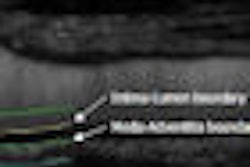Norwegian women who were treated with radiation therapy for stage II/III breast cancer had rates of thyroid disease as much as 300% higher than normal controls, according to a study published in the November issue of the International Journal of Radiation Oncology, Biology, Physics.
Researchers from the Norwegian Radium Hospital of Rikshospitalet University Hospital in Oslo evaluated 403 responses to a questionnaire mailed to patients who had undergone postoperative radiation therapy with (98%) or without (2%) adjuvant systemic therapy at Norwegian Radium Hospital between 1998 and 2002 (IJROBP, 2009, Vol. 75:3, pp. 764-770).
The researchers wanted to assess the prevalence and development of thyroid disease in patients who had received multimodal treatment for stage II/III breast cancer and compare them with an aged-matched control group from the general population.
Data from the control group were acquired from the Nord-Trøndelag Health Study, in which all inhabitants over 20 years of age living in Trøndelag County between 1995 and 1997 were asked to complete a questionnaire. Women who responded positively to questions about thyroid disease were invited to have a blood test for thyroid function. The records of five women for each breast cancer patient were selected, for a total of 2,015 participants in the control group.
Twenty-four percent of the breast cancer patients reported a diagnosis of at least one thyroid disease, compared with 11% of the control group. Hypothyroidism was most frequently reported for both groups, but the breast cancer patients reported an 18% incidence and the control group reported 6%. Prevalence was comparable for all other types of thyroid diseases for both groups.
Seven percent of the patients reported that they had hypothyroidism before being diagnosed with breast cancer, compared with 6% for the control group. After radiation therapy, the patients were twice as likely to be diagnosed with hypothyroidism compared to those in the control group.
Forty-four patients reported that they had developed hypothyroidism after a median 35 months following radiation therapy treatment. Fifty-nine percent of these patients (treated between 2000 and 2002) had CT-based treatment planning, and 41% (treated in 1998 and 1999) had radiation therapy based on a standardized field arrangements.
Lead author Dr. Kristin Reinertsen and colleagues attribute this higher incidence to the fact that doses to 50% of the thyroid gland were up to 18 times higher using CT planning than the standardized field technique. No part of the thyroid gland received less than 12 Gy when using the CT planning system, compared to the 1-4 Gy received by only a portion of the thyroid gland with respect to the standardized field technique used.
Copyright © 2009 AuntMinnie.com

















